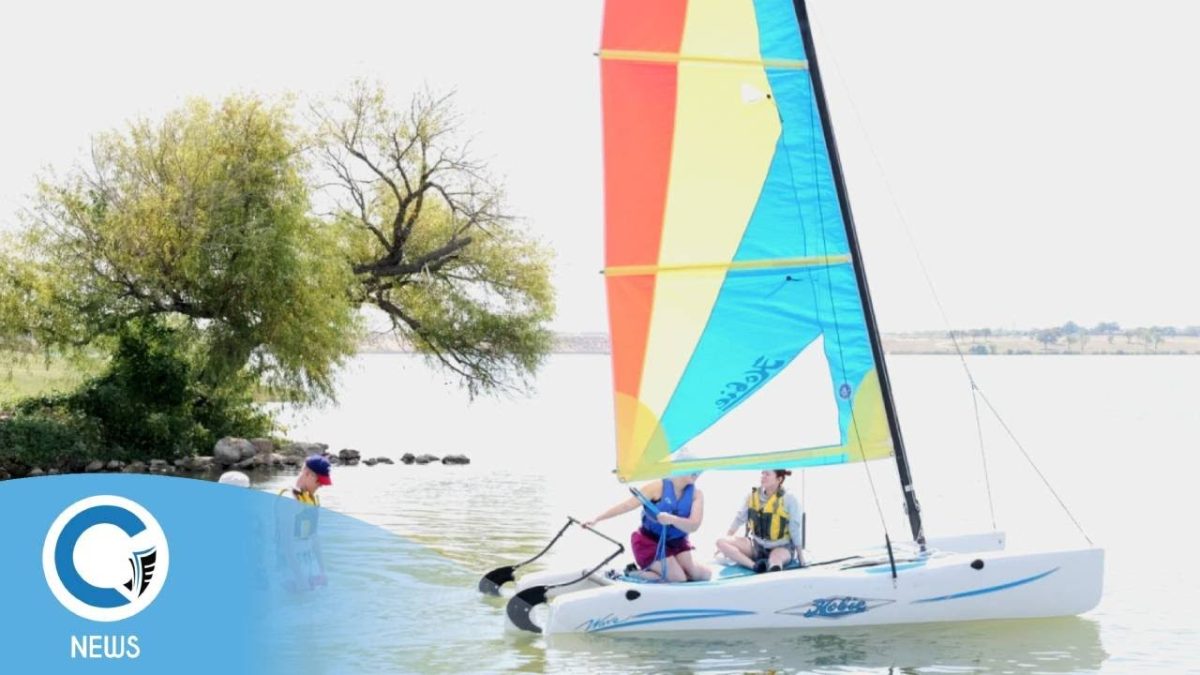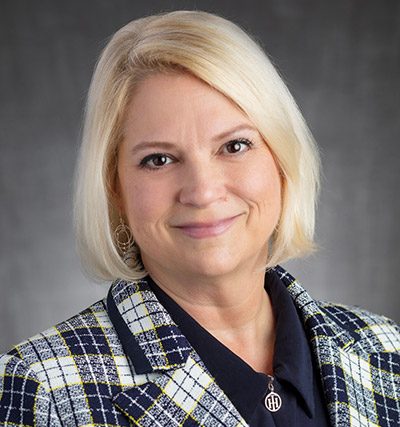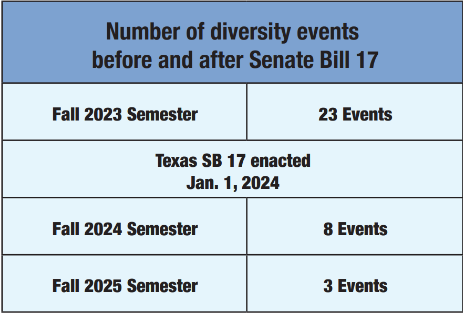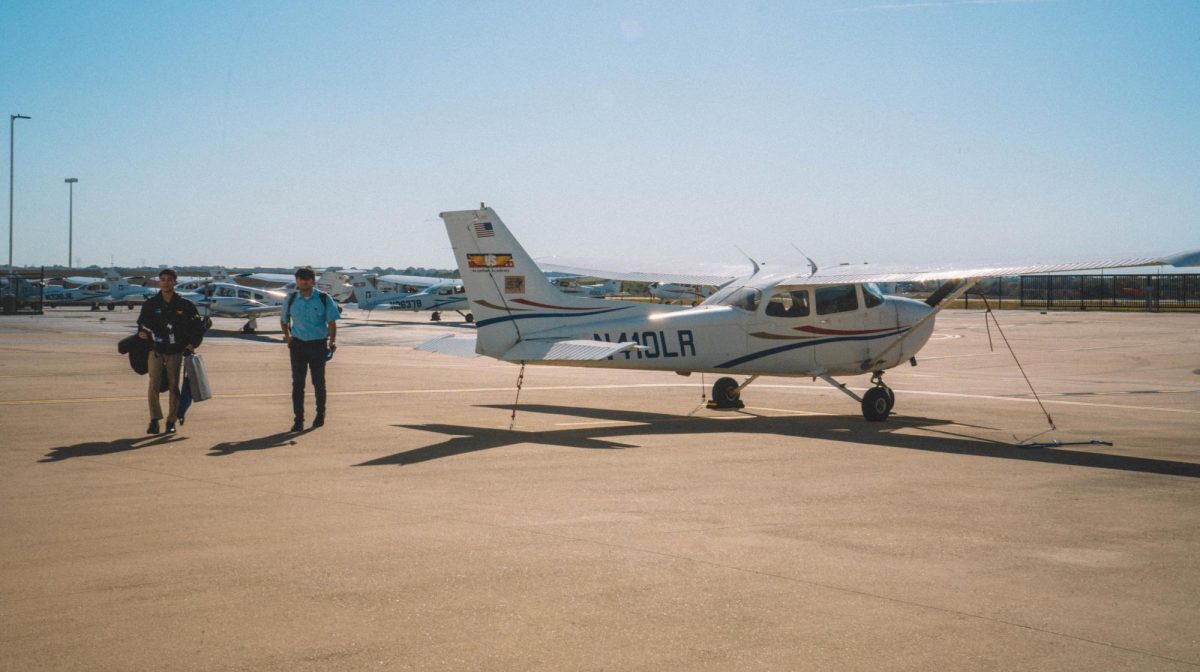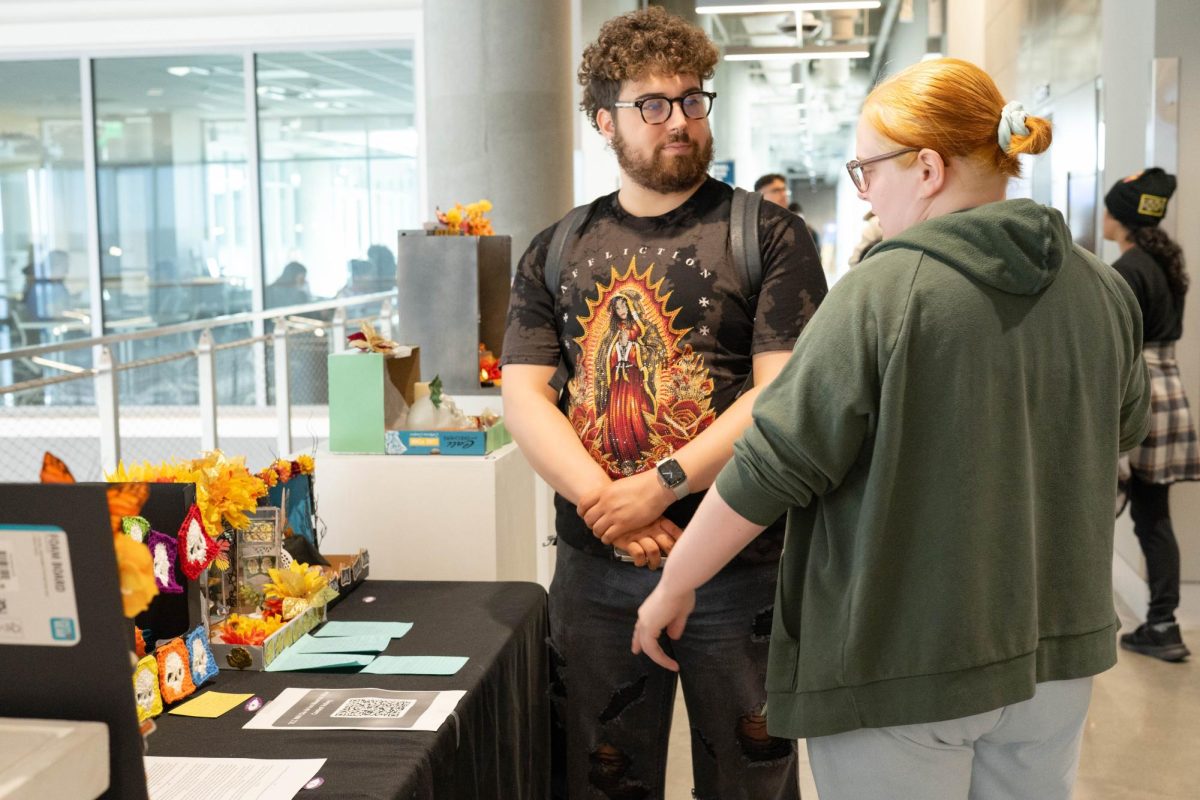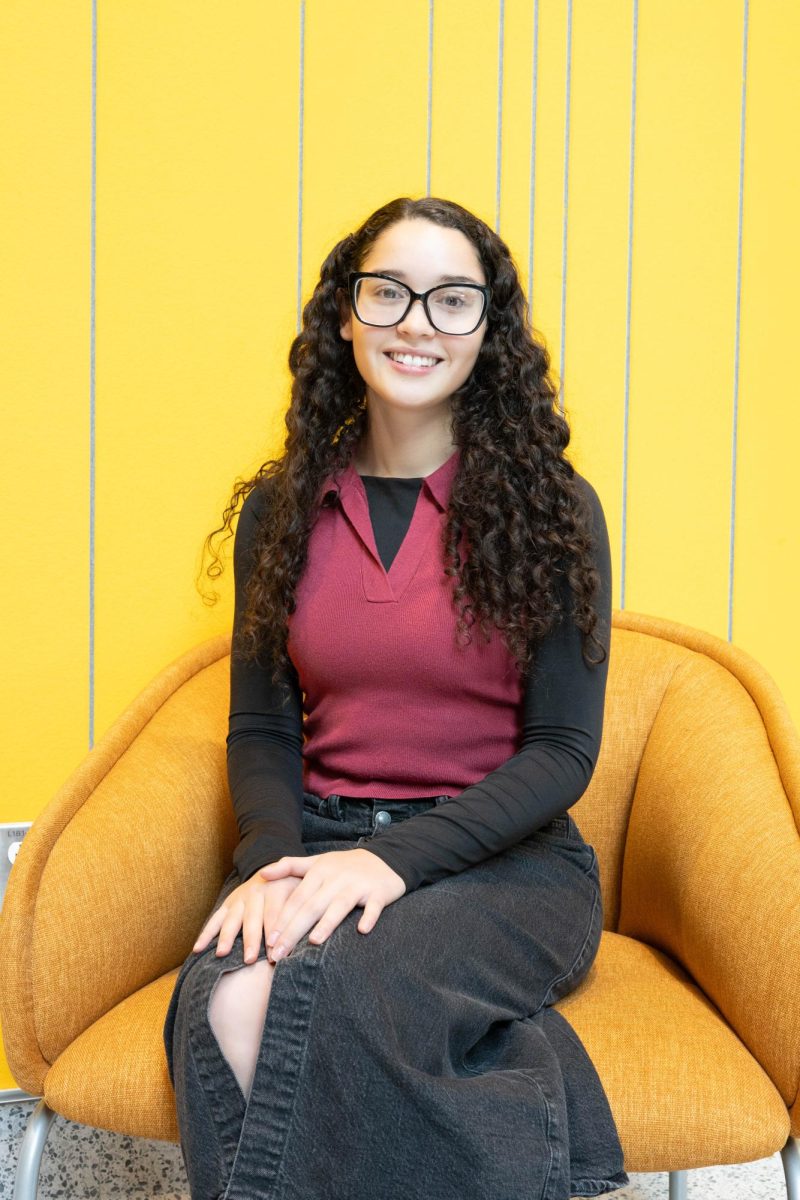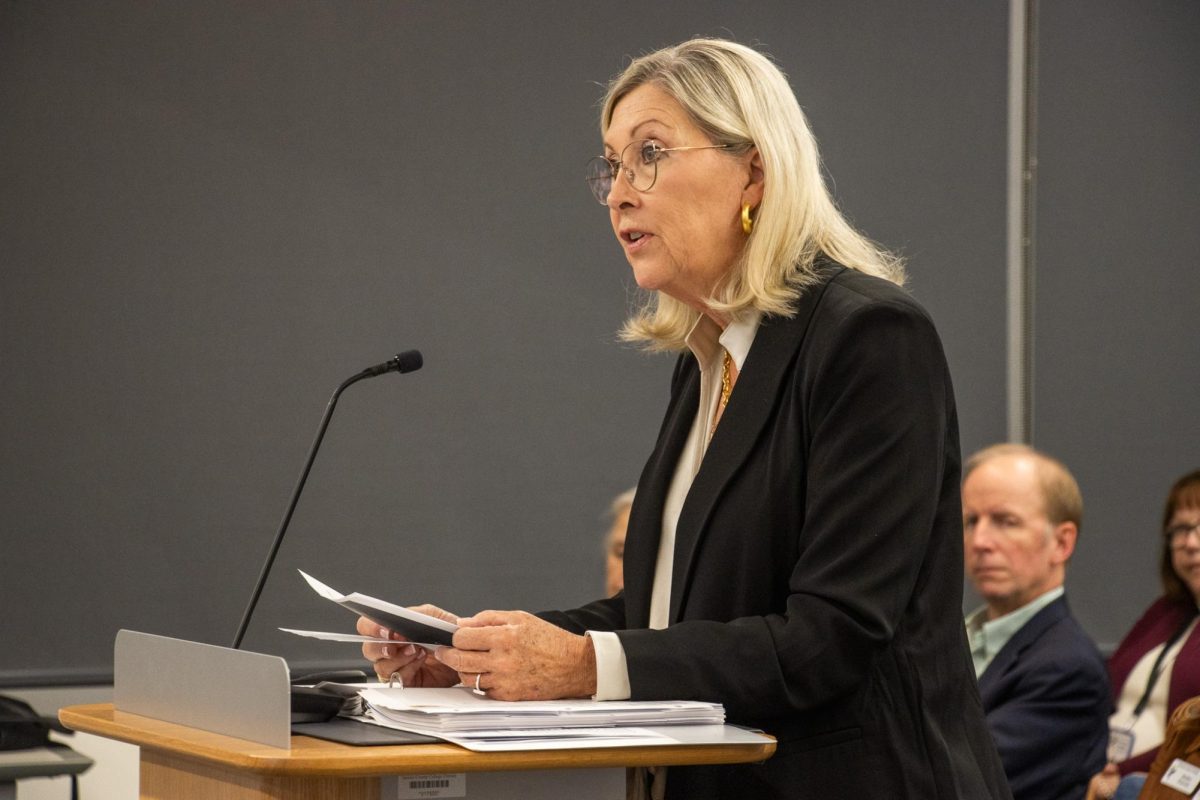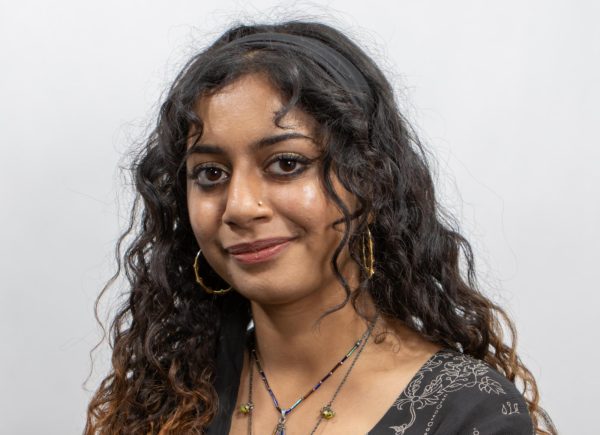Christopher Anderson’s first solo flight was an adrenaline rush, almost resulting in a crash.
“When you see your life flash before your eyes, you’re like, ‘Maybe I shouldn’t be doing this,’” Anderson said. “I like to be alive, you know.”
But in the end, Anderson still chose the life of a pilot. He went on to pursue a professional pilot degree at TCC’s Center of Excellence for Aviation, Transportation, and Logistics associated with the NW Campus.
The center offers degree opportunities in aviation maintenance, becoming a professional pilot, welding, logistics and supply chain management and non-destructive inspection, testing and evaluation.
It’s a relatively newer looking building with wide-open warehouse space that houses teaching equipment such as deconstructed plane parts used for hands-on learning. The building is next to Alliance Airport, and students will find themselves flying planes using the same control tower as planes from Amazon Prime or FedEx.
David McGarity, chair of the professional pilot program, said learning how to fly is an amazing process.
“We’re going to turn these people into wizards,” he said. “They’re going to be able to float a ton of metal into the air the first day they come here to learn how to fly. … After two or three months here, they get to the point where they get to solo the airplane and fly all by themselves, without any instructor or anyone else. It’s an accomplishment that they will remember for the rest of their lives.”
As a former commercial pilot himself, McGarity said students can expect a unique workplace.
“You wake up in the morning here in Dallas, and maybe later in the day you’re in Puerto Rico, and then you’re home again with your family at night,” he said.
Michelle Frantik, coordinator of flight operations, said it can be challenging at first, but after getting past the initial struggles of adjusting to flying a small plane and gaining necessary aviation knowledge, students will find success.
“One of the great things is that when they finish the program, they immediately go from student to flight instructor,” she said. “One day they may be in their khaki pants and polos, which is our uniform as a student, and the next week, they might be in a U.S. Aviation flight instructor uniform teaching the students coming in. So that’s a pretty neat turnaround and not something that happens typically so quickly in other industries.”
There are flight stimulators available for those who are learning how to fly, free of charge to students in the program. These simulators are large machines, resembling a
VR set-up for a video game. Inside, students practice with large screens in front of them, shifting through different types of flying situations.
“This is what the pilot is seeing,” Natalie Shrestha, a career adviser at the center, said. “The student is learning how to navigate, understand where they are in location to a map, how many thousands of feet off the ground, making sure they’re not going to run into your buildings or mountains. That’s one of the most crucial skills.”
Savannah Lejeune is a student who uses the simulator for her degree program. The simulator can replicate full engine failures.
“Like if I pulled the engine up, oh my god, that engine just died,” she said. “And then you just pull idle … and hopefully it would be in the grass and not in, like a fence or another plane or something.”
Their newest program is nondestructive inspection, testing and evaluation. Shrestha said the degree deals with seeing if something was built correctly.
“I like to describe it as the medical industry, but for people who hate sick people, needles, or blood,” she said. “Students are learning how to use sonograms and X-ray machines.”
The pilot and maintenance programs currently have a one to twoyear waitlist. Michael Esquivel, dean of business industry, said there are plans to expand the program to accommodate the growing industry demand. Esquivel said almost 100 students aren’t able to join the program each semester due to space.
“We’re looking at purchasing equipment, hiring faculty, creating a degree path or training for air traffic controllers,” he said. “Those are examples of increasing capacity with our current program and adding new training opportunities.”
Instructor Raymond Bacon has been with the aviation maintenance program at the center for 18 years and said students walk away from the program being able to do something meaningful with their hands. 
“Watching a student go from zero knowledge and skill into being able to pass the written test for the FAA and then actually get hired by a company locally or nationally, that’s the coolest part,” he said. “The students actually understand electricity. They understand physics, hydraulics, pneumatics, mechanical engineering, electrical.”
He said it can be overwhelming for a student to adjust to the workload. The progressive and repetitive classes build upon each other with the skills being learned in one class used in the next one.
“If you didn’t pay enough attention in science class in high school, electricity is likely to baffle you,” he said. “But we use that as kind of a test that your first term is going to be your toughest. After that, it becomes more and more hands-on, so that by the end of the two-year program, it’s less theory and far more hands-on.”
Bacon said the maintenance classes are less focused on theory and more on practical application.
“You’re showing them by example how to think critically, how to disregard distractors, how to troubleshoot with the most likely cause and then cure it,” he said. “I don’t know of any curriculum, so it is strictly by example and by experience.”
Though some may find the course load overwhelming, instructors make accommodations for students who may need them.
“I was talking to a student that was having problem getting her landings down right at the beginning, and after talking to her for a couple minutes, I realized she needed to have a cushion that she sat on because she was a little bit shorter than most of the other students,” McGarity said. “Once she could see clearly over the dash, she was able to get her landings down on solo.”
McGarity said all the instructors are extremely experienced in the aviation industry. Esquivel said instructors even stay after work to help students achieve their goals.
“When we’re teaching them something, it’s not something that they can just learn and forget,” McGarity said. “It’s something they will use in their career for the rest of their life.”
Aramiz Brooks contributed to this report.
























